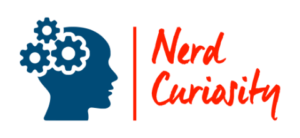Navigating the complex world of product development, you might find yourself puzzled by the distinct roles of a product manager and a product owner. Each contributes uniquely to the triumph of a product, orchestrating success from behind the scenes. Understanding these roles ensures more than just terminology clarity—it empowers you to appreciate the nuances of strategic and tactical product oversight within any organization.

The product manager and product owner have responsibilities that sometimes overlap, yet each has a distinctive scope of influence. At its core, the product manager focuses on product strategy, roadmap, and feature definition for the entire product lifecycle. In contrast, the product owner works within the framework of agile teams, translating the product vision into detailed user stories for implementation.
As we delve deeper into these pivotal positions, anticipate a clear breakdown of their respective responsibilities, how their tasks intertwine for product success, and how their contributions shape the vision and execution in the organization. You’ll gain insight into the crucial decision-making processes, and how each role fits in the puzzle of product development, preparing you to interact with or even assume one of these dynamic roles.
Defining Roles and Responsibilities

Before delving into the specific duties, it’s important for you to understand that product managers and product owners carry distinct responsibilities that contribute to the product’s success. Both roles require effective communication and a clear vision, yet they diverge in their approach to strategy and execution.
Overview of Product Manager Duties
Product managers serve as the visionary leaders for a product. They shoulder the responsibility of articulating the product’s vision, crafting its strategy, and ensuring that the product aligns with overall business goals. They work closely with numerous stakeholders, guiding the development team toward building a product that resonates with customers. Not just the high-level stewards, product managers must also dive into market analysis, prioritizing what needs to be built and setting the long-term roadmap.
- Crafting Vision and Strategy: Develop a compelling vision for the product and establish the strategic direction.
- Market Research: Gather and analyze customer insights and competitive data.
- Roadmap Planning: Outline steps and milestones necessary to meet product goals.
Key Responsibilities of a Product Owner
The product owner is more tactical, managing the product backlog and ensuring the team’s efforts are perfectly in sync with the immediate requirements. You need to prioritize tasks and features based on their value to the product and business. As a product owner, you remain in constant communication with the development team, grinding through the details to adapt and refine the product features.
- Backlog Management: Organize and prioritize the product backlog for maximum efficiency.
- Detail-oriented Communication: Act as a liaison, ensuring everyone understands the tasks at hand.
- Iteration Management: Adapt and fine-tune features, embracing an agile workflow.
Comparing Manager and Owner Functions
When considering product managers versus product owners, it’s like looking at two sides of the same coin. Product managers are your long-term strategists, concerned with the product’s well-being from inception to launch and beyond. They set the trajectory. On the other side, product owners take the baton for the sprint, focusing on the day-to-day tasks to turn that big picture into reality. Both require your strong leadership and communication skills, but their functions are complementary, ensuring that the product thrives both today and tomorrow.
- Product Managers:
- Long-term Planning: Define the product’s future and overall path.
- Cross-functional Leadership: Engage with various departments to align efforts.
- Product Owners:
- Short-term Execution: Keep the team aligned on current priorities.
- Direct Team Interaction: Give the development team detailed feedback and guidance.
Vision and Strategic Direction

Defining the Product Vision
You’re at the helm, crafting a product vision that’s both inspiring and achievable. While a product manager often handles this, they envision where you want the product to eventually land. They consider market trends and consumer needs to craft a long-term vision that’s innovative and directs the product’s journey.
Aligning Vision with Business Goals
Here, strategic alignment is key. You must ensure business goals and product strategy are in sync. If a product owner is involved, they translate the broader strategy into actionable items for the development team, confirming every feature supports the overall vision and drives business value.
Strategic Roadmap Planning
A strategic roadmap is a detailed plan that outlines how your product will evolve. It should reflect priorities and timelines that honor your strategic objectives. Whether it’s a product manager defining the roadmap or a product owner working within it, both roles are tasked with balancing immediate demands with long-term vision.
Interactions and Team Dynamics

Collaboration Within Agile and Scrum Teams
As a Product Owner, you’re often entrenched in the Scrum framework, working closely with the Scrum Master to prioritize the backlog and clarify requirements for developers. In contrast, a Product Manager may work with a wider cross-functional team, strategizing and ensuring that every segment aligns with the product’s long-term vision. Both roles require seamless collaboration to ensure that the Agile team is not just efficient but also adaptive to change.
Stakeholder Engagement and Communication
Your role either as a Product Manager or Product Owner involves constant engagement with stakeholders. Facilitating discussions, managing expectations, and channeling feedback into the product lifecycle are critical. Regular, transparent, and clear communication ensures that stakeholders’ needs are aligned with the team’s goals and helps steer the product in the right direction.
Product Management and Development Synergy
Bringing together product management and development teams is crucial for synergy. Product Managers define the ‘why’, and the ‘what’, while Product Owners and developers focus on the ‘how’ of turning that vision into reality. Here, collaboration is more than a buzzword—it’s where strategic direction meets sprint planning and technical execution.
The Tactical Elements of Product Ownership

The success of your product hinges significantly on how well you manage the day-to-day tasks that refine and drive your product forward. Let’s break down these responsibilities into specific subsections to understand them better.
Backlog Management and Grooming
Your product backlog is a living entity that requires consistent upkeep to ensure that your product evolves as efficiently as possible. It involves prioritizing tasks based on their value to the product and the user experience. Each item in the backlog represents a piece of work that can range from new features, bug fixes, to technical debt. During backlog grooming sessions, you scrutinize and refine the backlog to make sure that priorities are aligned with the strategic goals, and that every upcoming sprint targets the most impactful improvements.
User Stories and Customer Feedback Integration
Creating user stories is an integral aspect of capturing the essence of customer needs. These stories translate into functionalities that your team will develop. The effectiveness of a product is often measured by how well it solves your user’s problems. To construct successful products, integrative methodologies involve consistent and thoughtful incorporation of customer feedback into this process. When you maintain a close loop between the feedback received and the user stories created, you ensure that the product backlog reflects real customer priorities and demands.
Measuring Success and Continuous Improvement

Evaluating the performance of both product managers and product owners rests upon well-defined metrics and receptiveness to continuous enhancements. Let’s explore how you can measure success accurately and implement constant improvements in your product lifecycle.
Success Metrics and Performance Analysis
To grasp how well the product is performing, you must track specific success metrics. The Net Promoter Score (NPS) offers insights into customer satisfaction and loyalty by measuring the likelihood that users recommend your product. It’s a vital gauge for customer experience, but you should complement it with other analytics, like usage statistics, which quantify engagement, and sales figures, which reflect market performance.
- Net Promoter Score (NPS): Insightful for customer loyalty.
- Usage Statistics: Reflect user engagement levels.
- Sales Figures: Indicate product performance in the market.
Assess these figures regularly to identify trends and scope for enhancement. Data should dictate your strategy, guiding you to informed decisions.
Iterative Development and Feedback Loops
Your product’s success hinges on its ability to adapt. Embrace iterative development; a methodical approach to continuous enhancement based on recurring feedback cycles. This allows you to refine features, buoyed by actual user responses.
- Market Research: Initially informs product features.
- Continuous Feedback: Fuels revisions and improvements throughout the product’s lifecycle.
Incorporate market research initially to align the product with user needs. Then, create robust channels for consistent customer feedback, harnessing it for ongoing modifications. Regular iterations ensure your product not only meets but exceeds user expectations over time.
Conclusion

In your journey through the roles of product management, you’ve seen distinctions and overlaps. Product Managers and Product Owners play unique yet collaborative roles in product development. As a Product Manager, you’d focus on the strategic vision, aligning the product’s roadmap with long-term business goals. Your peer, the Product Owner, operates tactically, maximizing the product’s value and ensuring the scrum team’s backlog reflects urgent project needs.
You’ve learned that these roles can sometimes merge, especially in smaller companies or agile environments. However, remember the broader visionary role of the Product Manager compared to the more detail-oriented focus of the Product Owner. If you find yourself in one of these positions, you’ll now have a clearer understanding of your responsibilities and how they contribute to the product’s success.
Remember, as your product evolves, so may your role. Flexibility and clear communication between you and your team are key. Let these insights guide you to thrive in either position, increasing both the product’s impact and your professional growth.
